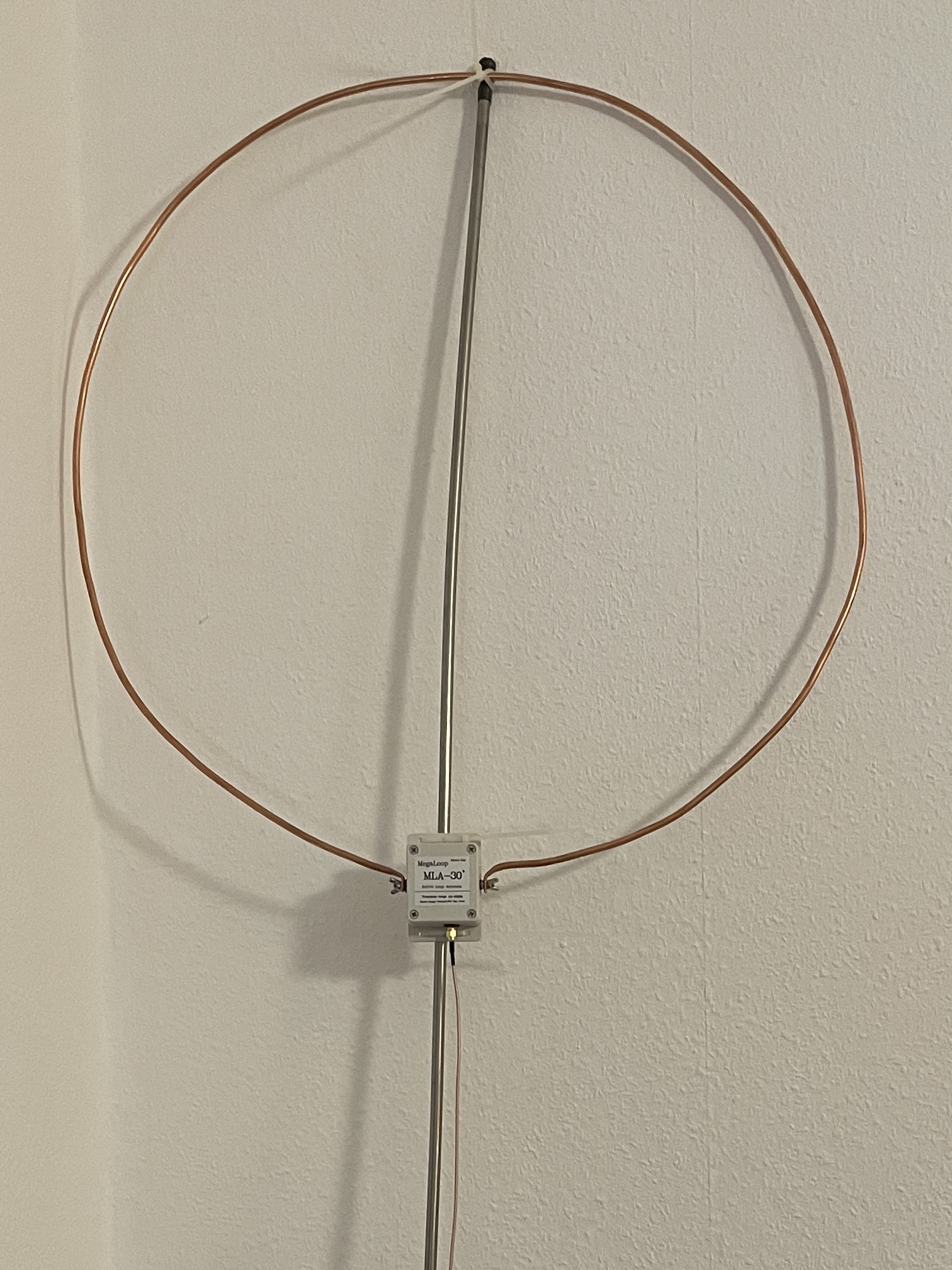Since I live in the middle of Berlin and am surrounded by 6-story apartment buildings, my reception conditions are very poor. The sources of interference are extremely diverse. In addition, there is an LED street light directly in front of my balcony.
I have provisionally set up the MLA 30 Plus on the balcony on the second floor, on a two-meter high bar, which points diagonally to the street. I have noticed that the further the antenna is from the apartment, the better the reception.

Receiving on 40m
Receiving on 80m

Reception on 20m with FT8 over 2 hours

Currently I am working on a modification of the MLA 30 Plus: I have a 2m long copper tube, with 6mm diameter bent into a circle and mounted on the antenna. Provisionally, I have insulated the upper end of the stainless steel rod with self-welding tape and attached the MLA 30 Plus, with cable ties to these. This will later become the final mounting on the balcony.

























